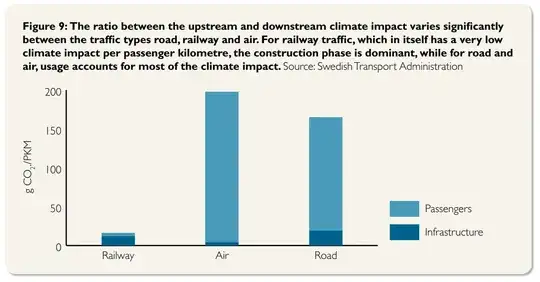Chester and Hovarth are scientists publishing in their area of expertise. I am not qualified to evaluate their methods. I have to restrict this answer to evidence that is at least as high quality as theirs. Their paper has garnered 315 citations since it was published. Ultimately, other researchers are the real peer review. I skimmed a few of these articles looking for a critical review of Chester and Hovarth's work. Most of the authors seemed to accept Chester and Hovarth's main conclusion, which had nothing to do with your question. Maybe someone willing to put in a massive amount of time and effort can find something. Maybe more work will be published in the future.
Your question appears to correctly restate the claims of the paper.
According to their paper, flying produces fewer greenhouse gas emissions per passenger kilometer traveled (PKT) than driving. A large aircraft produces roughly 125 grams of CO2 equivalent per PKT; A sedan produces roughly 230.
The conclusions of the paper depend on assumptions they made in their methods. They chose to evaluate 747s and 2005 Toyota Camrys. They also chose data about average passenger occupancy for both of these vehicles. I cannot find in their paper exactly what this data said about the average number of passengers in a car. Although these assumptions are a potential weakness in their study, all studies make assumptions. Without simplifying assumptions, you can never get anything done.

The above figure is an excerpt from a larger figure in the paper. It compares the equivalent CO2 emissions of a Camry and a 747. "The maroon-colored line captures the range in per-PKT emissions at low and high occupancy." This shows that a high occupancy car is better than a low occupancy airplane. Overall the chart says that the average plane is better than the average car.
They also seem to be assuming that there is on average, significantly more than one person in a car. I am skeptical of this. I may be misinterpreting that aspect of their figure.
Other researchers have made broadly similar claims
This article, reviews research by several authors, including Chester and Hovarth.
According to an American study by Michael Sivak, "The main finding of that study was that, while flying domestically in the U.S. used to be much more energy intensive than driving, that is no longer the case." This agrees with the claim. Sivak's finding that the emissions from air travel has changed dramatically over time, implies that results done in the US may not be super relevant to the EU. I don't know how European and American air travel is different. Sivak also agrees that a high occupancy car is better than an average airplane.
These articles, take issue with Sivak's analysis. Their critique also applies to Chester and Hovarth. I did not detail read Sivak's work, so I will apply the critiques to Chester and Hovarth's work. They have similar methods, and the same problem.
The critics do not take issue with the basic finding that an average plane ride is better than a low occupancy car ride. The average american car ride, is a low occupancy commute within a city, and that is what Chester and Hovarth based their work on. These trips cannot be replaced with a plane trip. Comparing average car rides to average train rides is an apples to oranges comparison. We should compare average cross country car rides to average plane rides.
For cross country trips the second article reports that cars are better than planes if there are 3 or more people in the car. I am not sure her math is exactly correct, but this seems roughly consistent with the other authors.
Conclusion
I am not sure how to compare the average cross country trip to the average plane ride, but if you have a choice between a car and a plane for a cross country trip:
- Choose the plane if you are going by yourself.
- Choose the car if you are traveling with 2 or more other people.

